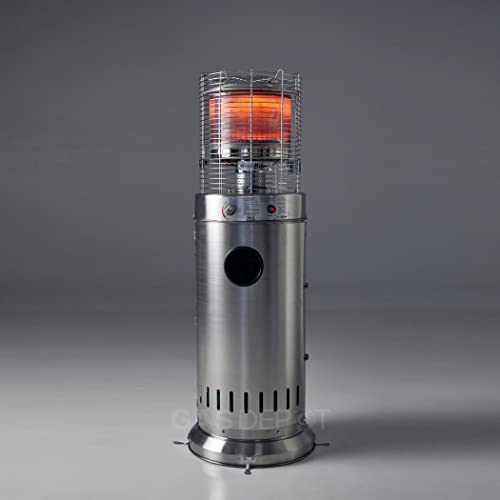Buying Gas Radiant Heaters: A Comprehensive Guide
Gas radiant heaters have actually gotten appeal in the last few years for their efficiency and ability to provide instant warmth. As more property owners and businesses look for methods to keep their spaces comfy, comprehending the features, benefits, and factors to consider when purchasing these heating units can be extremely useful. This article explores the intricacies of gas radiant heaters, aiding potential buyers in making notified decisions.
What are Gas Radiant Heaters?
Gas radiant heaters are gadgets that use propane or gas to discharge heat directly into a space. Rather than heating the air, they warm items and individuals in their area, offering comfort quicker and effectively. These heaters are popular for both indoor and outdoor settings due to their adaptability and effectiveness.
Key Features of Gas Radiant Heaters
- Direct Heating: Unlike traditional heaters that warm the air, gas radiant heaters offer direct warmth, making them an efficient choice for rapidly heating up areas.
- Portability: Many models are available as portable units, enabling them to be quickly moved from one place to another.
- Fuel Variety: Gas radiant heaters can be powered by natural gas or propane, providing users flexibility based upon schedule and choice.
- Adjustable Settings: Most gas radiant heaters featured adjustable heat settings, permitting users to tailor the level of warmth based on their needs.
Advantages of Gas Radiant Heaters
- Energy Efficiency: These heaters convert gas into heat effectively, leading to lower utility expenses compared to electric heaters.
- Quick Heating: Radiant heat is felt practically instantly, making these heaters ideal for sudden temperature level drops.
- Low Maintenance: Gas radiant heaters usually need less upkeep than electric designs, making them a hassle-free option.
- Eco-friendly: When powered by clean natural gas, these heaters can be a more ecologically sustainable choice compared to other heating techniques.
Types of Gas Radiant Heaters
When it comes to picking a gas radiant heater, it's necessary to comprehend the various types offered. Below are the most common options:
- Indoor Gas Radiant Heaters: Designed for indoor areas, these heaters are usually vented or unvented and frequently come with built-in security functions.
- Outdoor Gas Radiant Heaters: Commonly utilized in patios or outdoor dining areas, these heaters are designed to withstand the elements.
- Wall-Mounted Gas Radiant Heaters: A space-saving choice, these systems are ideal for smaller spaces and can be outfitted with various heat outputs depending upon the location's requirements.
- Freestanding Gas Radiant Heaters: These portable designs can be used in numerous areas, ideal for those who need flexibility.
Purchasing Guide: How to Choose the Right Gas Radiant Heater
When acquiring a gas radiant heater, numerous aspects must be thought about to guarantee you select the best design for your space:
1. Heating Capacity
- Measured in BTUs (British Thermal Units), the heater's capacity figures out just how much location it can efficiently warm. Purchasers must assess their specific requirements based on space size.
| Room Size (sq feet) | Recommended BTUs (for Gas Radiant Heaters) |
|---|---|
| 100 - 200 | 5,000 - 10,000 BTUs |
| 200 - 400 | 10,000 - 20,000 BTUs |
| 400 - 600 | 20,000 - 30,000 BTUs |
| 600 - 800 | 30,000+ BTUs |
2. Type of Gas
- Consider whether you will be using propane or natural gas, as different heaters cater to different fuel types.
3. Security Features
- Search for designs geared up with security features such as automatic shut-off valves, tip-over defense, and oxygen deficiency sensing units.
4. Installation Requirements
- Some heaters might need expert installation, particularly vented designs. Make certain to think about the expenses and requirements related to installation.
5. Mobility
- If flexibility is vital, think about portable designs that can be quickly moved from one location to another.
Setup and Maintenance
Gas radiant heaters are typically straightforward to set up, particularly portable designs. However, vented options might necessitate expert setup to guarantee they fulfill regional security codes.
Upkeep usually includes:
- Regular cleaning to prevent dust buildup.
- Examining gas connections and fittings for leaks.
- Making sure safety functions are practical.
Tip: Regular checks around the unit can help extend its lifespan and maintain safety.
Frequently Asked Questions (FAQs)
Q1: Are gas radiant heaters safe for indoor use?A1: Yes
, as long as they are correctly vented and equipped with required safety functions, they can be safely utilized indoors.
Q2: Can gas radiant heaters be used in enclosed spaces?A2: Unvented gas heaters can pose risks in enclosed spaces due to potential suffocation or carbon monoxide gas accumulation. Always ensure enough ventilation. Outdoor Gas Heaters : How do I understand what size heater I need?A3: The appropriate size depends upon the location you plan to heat. Describe the BTU chart
above to identify your needs. Q4: What is the difference in between propane and gas heaters?A4: The main distinction lies in their energy source
; propane is delivered by means of tanks, while gas is usually piped into homes. Q5: How can I optimize efficiency?A5: Ensure the heater is appropriately sized for your space, preserve it regularly, and think about utilizing it in combination
with other heating methods for maximum comfort. Gas radiant heaters can be an excellent addition to any home or business, using energy-efficient and fast heating solutions. By understanding the different types, features, and factors to consider
when acquiring, buyers can make educated decisions that fulfill their heating requires. With the best choice, these heaters offer comfort, reliability, and an inviting environment during cooler seasons.

